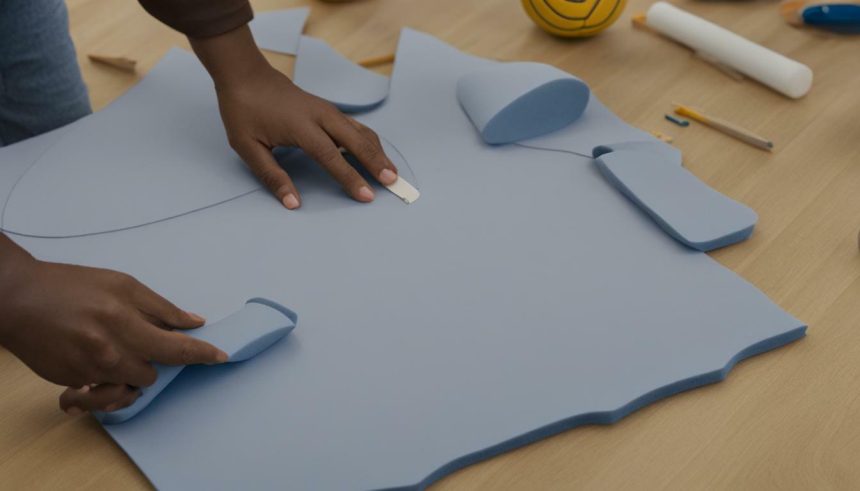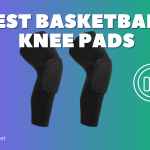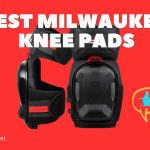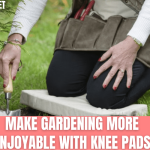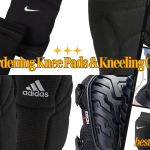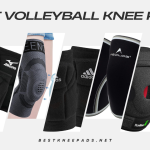If you’re an avid volleyball player, then you know just how important it is to have the right gear. One of the most crucial pieces of equipment you need to have is knee pads. These pads are designed to protect your knees from impact and help prevent injuries, such as bruises and scrapes. While you can purchase knee pads from sporting goods stores or online, making your own knee pads has its advantages.
In this section, we will provide you with a step-by-step guide on how to make your own knee pads specifically for playing volleyball. By making your own knee pads, you can save money, personalize your gear, and improve your game.
Key Takeaways:
- Making your own knee pads can save you money and allow you to personalize your gear.
- Knee pads are an essential piece of equipment for volleyball players as they protect the knees from impact.
- Creating your knee pads can enhance your performance on the court and help prevent injuries.
- In the following sections, we will discuss the materials needed, step-by-step instructions, and tips for personalization and maintenance of your homemade knee pads.
Materials Needed for DIY Volleyball Knee Pads
Before you start making your knee pads, let’s gather all the necessary materials. To make your DIY knee pads, you will need:
- Thick foam: This material will provide the cushioning and protection that your knees need during a game. Look for foam that is at least ½ inch thick and dense enough to absorb impact.
- Elastic: You’ll need elastic to hold the knee pads in place, so choose one that is durable and won’t lose elasticity over time.
- Fabric: You can use any fabric of your choice to cover the foam and elastic. Consider using a moisture-wicking and breathable fabric to keep your knees cool and dry during the game.
- Scissors: You will need sharp scissors to cut the foam, elastic, and fabric to the required size and shape for your knee pads.
- Needle and thread: You’ll need these to sew the elastic and fabric together and create a pocket for the foam.
- Pins: Pins are useful for holding the fabric in place while you sew it.
Make sure you have all these materials ready before you start making your knee pads. It will save you time and make the process smoother and more enjoyable.
Step-by-Step Guide to Making Volleyball Knee Pads
Now that you have all the necessary materials, it’s time to start making your knee pads. Follow these steps carefully to create knee pads that fit well, provide adequate protection, and are durable enough for your volleyball matches.
Step 1: Measure Your Knees
To ensure your knee pads fit well, you need to take accurate measurements of your knees. Use a measuring tape to measure the circumference of your knee, just above and below the kneecap. Record these measurements as they will be needed later.
Step 2: Cut the Foam
Using the measurements you recorded in step 1, cut out two pieces of foam padding to fit the shape and size of your knees. Make sure the foam pieces are thick enough to provide adequate protection.
Step 3: Cut the Fabric
Next, cut out two pieces of fabric that are slightly larger than the foam pieces. You can use any fabric you like, but make sure it is durable and breathable enough for sports activities. Place the foam pieces on the fabric and trace around them to create a cutting guideline.
Step 4: Sew the Fabric
Now it’s time to sew the fabric pieces to create a pocket for the foam padding. Place the fabric pieces with the right sides facing each other and sew around the edges, leaving a small gap to insert the foam. Turn the fabric right side out and insert the foam padding into each pocket.
Step 5: Close the Knee Pads
To close the knee pads, use a sewing machine or needle and thread to sew the gap closed. Make sure the stitches are strong and the gap is completely closed to prevent the foam from slipping out.
That’s it! Your homemade knee pads are now ready to use. Test them out and make any necessary adjustments for fit and comfort.
Tip: To improve the durability of your knee pads, reinforce the seams with extra stitching or use stronger thread.
Now that you know how to make your own knee pads for volleyball, you can create personalized gear that fits perfectly and enhances your performance on the court. Get creative and enjoy the process of making your own sports equipment.
Personalization and Maintenance Tips for DIY Knee Pads
Now that you have your very own customized knee pads, you can take them to the next level by adding personal touches. Consider adding your name, team name, or even your favorite volleyball quote to make them truly unique. You can do this by using fabric markers or iron-on patches.
It’s essential to keep your knee pads clean and in good condition to ensure they provide adequate protection and last longer. After each use, wipe them down with a damp cloth and let them air dry. If there are any tough stains, you can use a mild soap solution and a soft brush to gently scrub the affected area.
Tip: To prevent your knee pads from getting trapped in the washing machine, place them in a mesh laundry bag before tossing them in with the rest of your gear.
It’s also important to check for any signs of wear and tear, such as holes or loose seams. If you notice any damage, make sure to repair it before using your knee pads again to prevent injuries.
By following these simple maintenance tips and adding personal touches to your knee pads, you can enjoy playing volleyball comfortably and confidently for a long time.
Benefits of Making Your Own Knee Pads for Volleyball
Creating your own knee pads for volleyball comes with many benefits that can improve your game on the court. Here are just a few of the advantages:
- Cost savings: By making your knee pads, you can save money compared to buying expensive branded options. Plus, you can reuse materials you already have and tailor the padding to your specific needs.
- Customization options: When you make your own knee pads, you have the freedom to personalize them with your favorite colors, patterns, or designs – this can also help to differentiate yourself from your opponents.
- Better fit and comfort: Homemade knee pads can provide a more customized and comfortable fit specific to your leg’s shape, size, and individual preferences.
- Durable construction: Building your knee pads from scratch allows you to select high-quality materials and ensure that they will last longer than the average off-the-shelf alternative.
- Pride and satisfaction: Wearing knee pads that you made yourself can instill a sense of pride and satisfaction, boosting your confidence and overall enjoyment of the game.
Overall, creating your knee pads for volleyball is a fun and rewarding experience that can enhance your game while helping you save money in the process.
Conclusion
Congratulations on completing your very own knee pads for volleyball! You now have a unique piece of gear that is tailored specifically to you and your needs. Not only have you saved money, but you have also gained valuable knowledge about materials and construction, which can be applied to other DIY projects.
Remember to take care of your knee pads by following our maintenance tips. This will ensure that they remain in top-notch condition, allowing you to enjoy the game without any discomfort or risk of injury.
Keep Exploring and Improving
As you continue to play volleyball, take note of any areas where you feel your knee pads could be improved. You can always tweak the design or materials used to enhance your gear’s performance and comfort. Don’t shy away from experimentation to find what works best for you.
Homemade knee pads provide various benefits, including cost savings, customization options, and the potential for enhanced performance. You have taken the first step towards enjoying all these advantages. So, go out there, play your best game, and have fun!
